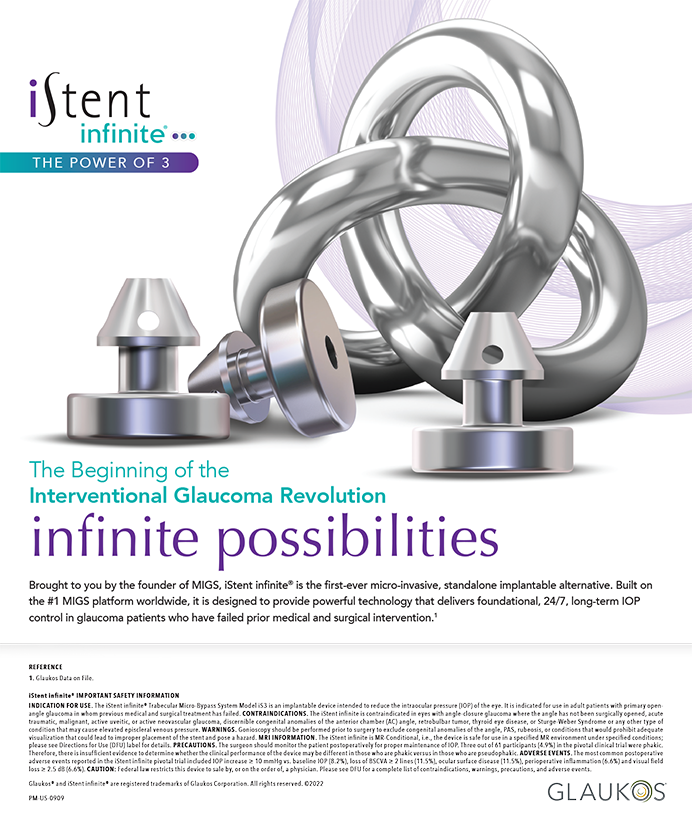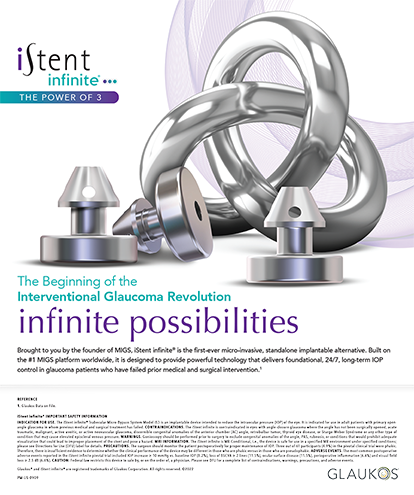Cover Stories | Jun 2005
The Whoops! Factor
Why refractive surgeons need to take a much closer look at their enhancement rates.
Shareef Mahdavi
Consumers who undergo the process of deciding to have refractive surgery overcome a great deal of innate fear before choosing in favor of it. Having weighed the potential benefits and risks, they go forward with the hope and expectation of experiencing daily life without glasses. For nine of every 10 patients, the procedure goes as planned, the outcome is great, and everybody's happy. The Wow! factor is alive and well. But what about the other 10%? I'm talking about those patients who experience delayed visual recovery and need a retreatment, which the profession has neatly termed an enhancement.
THE TOLL RETREATMENTS TAKE ON PATIENTS
Those of us who work in the realm of refractive surgery know that, over time, virtually all complications disappear and the patient will likely see very well. From the customer's perspective, however, the product has failed to meet his expectations. Once he overcomes his concerns (rational or irrational) about long-term problems, his reaction is one of disappointment. This scenario reminds me of how Phillip Crosby, the quality guru, describes poor quality: “They didn't get it right the first time.” A colleague of mine noted that his LASIK patients who need retreatments give him a look that says, “You must have pushed the wrong button on the laser.”
These sentiments are real, and I cannot stress enough how important it is to face them rather than ignore them. No surgical outcome can ever be guaranteed. The frustration your customer experiences is the same as what you experience when a purchase doesn't go as planned. It is no different from what you would feel if that expensive European car you bought last year had to go back to the dealership to correct manufacturing defects. Actually, your patient's disappointment is worse, because he can't trade in his eyes the way you ultimately can trade in the car.
THE COST OF RETREATMENTS TO YOU
Lost Time and Revenue
You probably know that retreatments can be expensive to your practice. I want to break them down into two areas of cost. The first is internal to your practice and is a measure of the surgeon's and staff's time, laser usage and fees, and any disposables required to perform a secondary treatment. Daniel Durrie, MD, of Overland Park, Kansas , and Richard Lindstrom, MD, of Minneapolis, have each calculated and published that a retreatment costs between $800 and $1,000 to perform. Expensive indeed, when you also consider the cost of the lost time that you and your staff could have spent treating new patients.
Reduced Referrals
There's another cost of retreatments that might even be more expensive. It is external to your practice and impossible to control. I'm referring to the rate of referrals from patients, also known as word-of-mouth marketing. Traditionally, customers who are happy with their experience tell at least three people. Studies have also shown that upset customers tell an average of 10 people about their negative experiences.1
Applying these averages to refractive surgery, nine of every 10 of your patients will be happy with their experience and tell three people, while one of every 10 will be unhappy and tell 10 people. The quick math would show that happy patients have told 27 people, whereas the single unhappy patient has told 10. But don't breathe a sigh of relief just yet. The emotional charge of the experience has a long tail. If those 27 people each tell three more, then 81 people have been positively influenced by the experience of those nine happy patients. Similarly, though, the 10 people who heard about the bad experience also tell 10 more people about it, and now you have 100 people who have been negatively influenced about undergoing refractive surgery at your practice (Figure 1).
The “influence score” is now 81 positive and 100 negative—all from that one unhappy patient (out of 10) who needed to be re-treated. This effect is a form of homeostasis in the marketplace, where the negative word-of-mouth outweighs the positive. The net result is that referrals from patients decline, your practice's growth is stunted (which, consequently, puts pressure on the practice to spend more money to attract patients), and the industry as a whole doesn't grow as fast.
REDUCING RETREATMENT RATES
The math exercise above is meant to illustrate that current retreatment rates in refractive surgery are likely having a more negative impact on industry growth than any of us realize. The 10% (and that's only an average) of patients who don't achieve quality results (as defined by Crosby) equates to at least 70,000 people last year alone who don't rate their experience high enough to enthusiastically recommend refractive surgery to their friends. That is, negative experiences by even a small percentage of patients are significantly hurting growth in consumer demand for LASIK.
Solving this problem requires a multipronged approach. The first step is to improve your clinical outcomes by actively measuring them and refining your surgical techniques. The second is to invest in technology that helps reduce your rate of retreatments. For a practice treating 100 eyes per month, a 10% retreatment rate costs $8,000 to $10,000 every month. Reducing that rate by even a few points will easily justify any monetary investment in outcomes analysis and/or technology.
The secondary effect of retreatments is more difficult to correct but, as stated earlier, even more critical. You should handle every retreatment patient with extra special care in order to minimize the negative impact of their failed first experiences. Currently, most practices penalize the patient for retreatments by charging extra fees. This is a surgeon-centric solution, when what is needed is a customer-centric alternative. Why are we further punishing the patient by making him pay additional money when the product failed to meet his expectations? You would not tolerate such treatment at that luxury auto dealership, but you expect as much from your customers. This doesn't make sense in a customer-centered practice. For example, one surgeon I know refuses to charge his patients for enhancements, using the event as an opportunity to strengthen the doctor-patient relationship and fulfill one of his practice's core values.
Always remember that what truly makes your practice grow is happy patients. Yes, it's become increasingly harder to please them, as their expectations continue to rise along with improved results. But at the end of the day, you are in business to serve your customers, and you should strive to serve them well. A focused effort on reducing retreatments will have a positive effect on your practice as well as on the entire industry.
Shareef Mahdavi draws on 20 years of medical device marketing experience to help companies and providers become more effective and creative in their marketing and sales efforts. Mr. Mahdavi welcomes comments at (925) 425-9963 or
shareef@sm2consulting.com. Archives of his monthly column may be found at www.crstoday.com.
1. Denton KR, Boyd C. Did You Know? Fascinating Facts and Fallacies About Business. Englewood Cliffs, New Jersey; Prentice-Hall: 1994.


